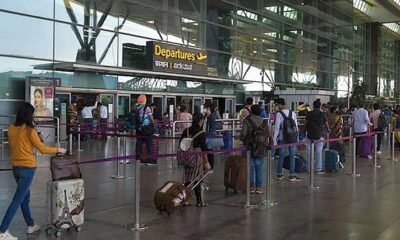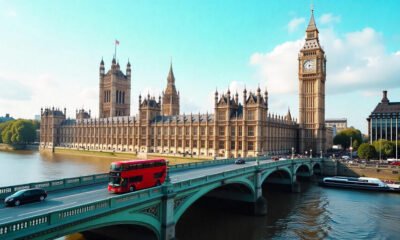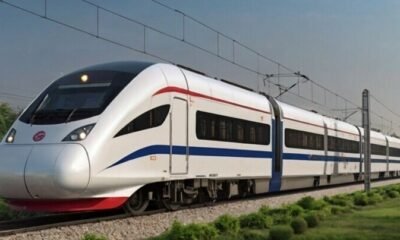Travel Guides & Articles
Saudi Arabia, Belarus, UAE, China, India, Kazakhstan, Uzbekistan, and Kyrgyzstan Drive Moscow’s Status as the Top Travel Destination in 2025

Published on
August 14, 2025
Moscow’s status as the top travel destination in 2025 is largely driven by a growing influx of tourists from Saudi Arabia, Belarus, the UAE, China, India, Kazakhstan, Uzbekistan, and Kyrgyzstan. Several key factors contribute to this surge in tourism. Firstly, the city’s rich historical and cultural heritage, including landmarks such as the Kremlin, Red Square, and the Bolshoi Theatre, attracts travelers seeking an authentic cultural experience. Simultaneously, Moscow’s modern offerings, such as luxury shopping centers, upscale restaurants, and vibrant nightlife, appeal to those in search of contemporary experiences.
In addition to its diverse attractions, Moscow benefits from enhanced accessibility due to increased direct flight routes and relaxed visa policies, making it easier for visitors from these countries to travel. Stronger diplomatic and economic relations, particularly with Saudi Arabia and China, have led to increased travel exchanges. Furthermore, the growing interest in business, education, and tourism opportunities in Moscow has led to a broader regional interest from countries like India, Kazakhstan, and Uzbekistan. All these factors combined ensure that Moscow continues to be a prime destination for travelers from these regions in 2025.
In addition to Moscow, other cities across Russia are also becoming increasingly popular among international travelers. St. Petersburg, with its stunning architecture and rich artistic heritage, continues to be a favorite, while Vladivostok, known for its striking landscapes and proximity to Asia, attracts adventure seekers. Kazan, Kaliningrad, Sochi, Irkutsk, Volgograd, Novosibirsk, and Nizhny Novgorod are also making a mark, each offering visitors unique cultural, historical, and natural experiences that appeal to a wide range of interests.
Moscow has become the heart of Russia’s thriving tourism industry. With its renowned landmarks, including the Kremlin, Red Square, and St. Basil’s Cathedral, the city draws millions of tourists annually. In addition to its historical gems, Moscow offers a blend of contemporary attractions such as upscale shopping malls, fine dining restaurants, and a lively nightlife scene. This unique combination of historical grandeur and modern indulgence makes Moscow a must-visit destination for those looking to immerse themselves in both culture and luxury.
While Moscow remains the primary draw for international tourists, other Russian cities are capitalizing on the influx of travelers by highlighting their own unique features. St. Petersburg, with its canals and imperial palaces, offers a European-like experience, while Sochi, a popular Black Sea resort, attracts those looking to combine outdoor adventure with relaxation. Vladivostok, on the Pacific Ocean, draws tourists seeking exotic landscapes and a taste of Russian Asia. These cities, along with others like Kazan and Irkutsk, provide an array of attractions that cater to a wide variety of global travelers.
To sustain this growth in tourism, Russia must focus on adapting to the specific needs of international visitors. Experts stress the importance of enhancing the overall travel experience by providing efficient transfers, guided tours in multiple languages, and culturally sensitive services. This focus on meeting the expectations of foreign travelers will push local hotels, restaurants, and attractions to improve their standards, ultimately strengthening Russia’s position in the competitive global tourism market.
The majority of international tourists visiting Moscow this summer are arriving from neighboring countries such as Belarus, as well as from further afield, including India, Saudi Arabia, Kazakhstan, China, the UAE, Uzbekistan, and Kyrgyzstan. These nations represent a growing segment of the market, with more travelers seeking out Russia’s unique offerings. The rising number of visitors from these countries highlights the diversification of Russia’s tourist base and the expanding global appeal of its cities.
A combination of factors has contributed to the increase in international tourism to Russia. One key element is the country’s recent relaxation of visa requirements with countries like Oman, making travel to Russia easier for tourists. Additionally, direct flight routes between Russia and Saudi Arabia, set to launch soon, are expected to further boost the flow of visitors. Simplified visa processes and improved air connections are central to the growing accessibility of Russian destinations.
Russia’s transportation infrastructure is another key factor in supporting the surge in tourism. Recent upgrades to airports, the expansion of railway services, and the opening of new international flight routes are improving accessibility and convenience for travelers. As more countries ease travel restrictions and as air travel rebounds globally, Russia is capitalizing on these opportunities to attract more international tourists.
The economic impact of this increase in international tourism cannot be overstated. Inbound tourism is a vital driver of Russia’s economy, contributing to local businesses, creating jobs, and generating revenue for the government. As foreign tourists spend on accommodations, dining, entertainment, and transportation, the positive ripple effect extends to various sectors of the economy, benefiting both the tourism industry and the broader Russian economy.
Several factors are fueling the country’s growing appeal. Beyond visa relaxations and new flight routes, Russia’s cultural and historical offerings continue to capture the attention of travelers. From world-renowned museums and heritage sites to vibrant festivals and natural landscapes, Russia offers experiences that are hard to find elsewhere. These features, combined with the country’s ongoing infrastructure improvements, make Russia an increasingly attractive destination for tourists from around the world.
As Russia continues to evolve its tourism sector, it will be essential to maintain this momentum by investing in services and infrastructure that cater to international visitors. The combination of streamlined travel processes, high service standards, and a diverse range of cultural and historical offerings will help Russia maintain its position as a major player in the global tourism industry. As the country works to meet the needs of international travelers, it is set to continue attracting millions of tourists each year, contributing to both economic growth and cultural exchange.
Moscow’s rise as the top travel destination in 2025 is fueled by increased tourism from Saudi Arabia, Belarus, UAE, China, India, Kazakhstan, Uzbekistan, and Kyrgyzstan, driven by its rich cultural heritage, modern attractions, improved accessibility, and stronger international ties.
In conclusion, Moscow, along with other key Russian cities, is on track for a summer tourism boom in 2025, driven by a combination of factors including relaxed visa regulations, improved transport links, and the ongoing appeal of Russia’s diverse offerings. As Russia continues to enhance its infrastructure and services for international visitors, the country is well-positioned to remain a major destination for tourists from across the globe. With these developments, Russia’s tourism sector is expected to thrive, bolstering its economic growth and global standing as a premier travel destination.
Travel Guides & Articles
These Are The Best Whale Watching Spots In India – Travel and Leisure Asia
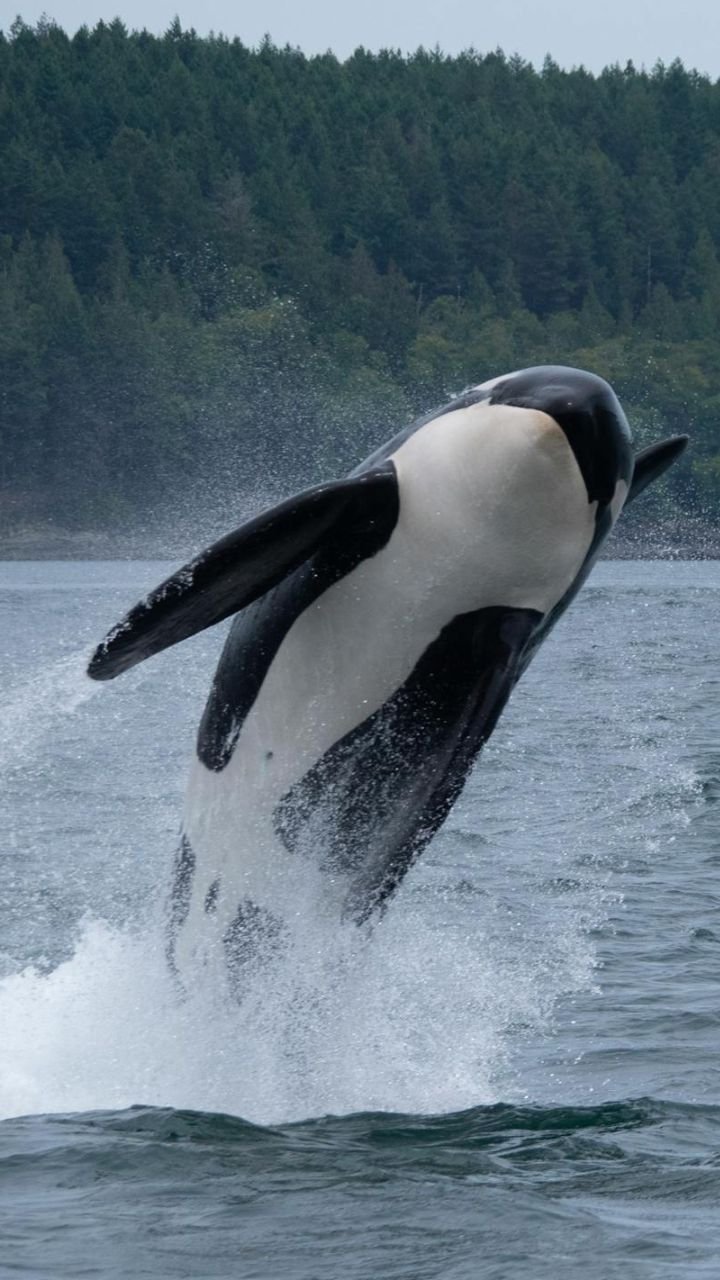
These Are The Best Whale Watching Spots In India Travel and Leisure Asia
Source link
Travel Guides & Articles
Heavy Rains Lash Gurugram, Noida, Ghaziabad; Schools, Offices Closed, Airlines Issue Travel Advisory
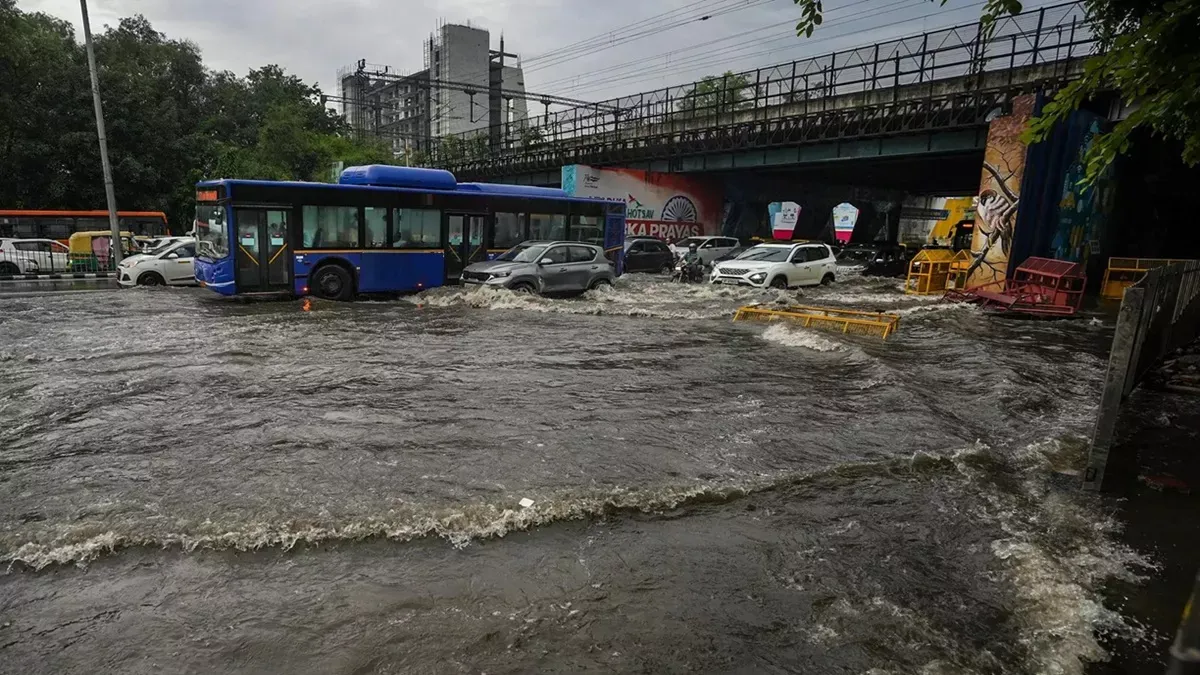
Delhi-NCR Weather: The India Meteorological Department (IMD) has issued a heavy rainfall alert for Delhi-NCR, including Noida, Gurugram, and Ghaziabad, as relentless monsoon showers continue to lash northern India. Today’s weather forecast for Delhi warns of intense downpours throughout the day.
02/09/2025: 05:25 IST; Light to moderate rainfall is very likely to occur at Barwala, Jind, Mahendargarh, Rewari, Narnaul, Bawal, Nuh (Haryana) Saharanpur, Deoband, Muzaffarnagar, Bijnaur, Pilakhua, Hapur, Gulaoti, Sikandrabad, Bulandshahar, Shikarpur, Pahasu (U.P.) Bhiwari,
— RWFC New Delhi (@RWFC_ND) September 1, 2025
In Gurugram, heavy rains have triggered severe waterlogging and massive traffic jams, with reports of a 7-kilometre-long traffic snarl. The District Disaster Management Authority (DDMA) has issued an orange alert for the city, advising the closure of all schools, colleges, and offices, and encouraging work-from-home arrangements.
Meanwhile, Noida and Ghaziabad are also experiencing heavy rainfall. The IMD’s weather alert extends to Himachal Pradesh and Uttarakhand, where a red alert has been issued due to the risk of flash floods and extremely heavy rainfall. Punjab and Jammu & Kashmir remain under an orange warning. As per today’s forecast, schools and offices in affected regions are expected to remain closed to ensure public safety.
Travel Advisory
🚧⛈Heads up, #Delhi travellers!
Due to today’s downpour, several roads across #Delhi are currently blocked or experiencing slow movement.
Please allow extra time, take an alternate route if possible, and check your flight status on our website or app before…
— IndiGo (@IndiGo6E) September 1, 2025
Air India also issued a passenger advisory: ” Rain may impact flight operations to and from Delhi today. Please check your flight status here https://airindia.com/in/en/manage/flight-status.html before heading to the airport and allow extra time for your journey to the airport.”
Rain may impact flight operations to and from Delhi today.
Please check your flight status here https://t.co/5vemTROi62 before heading to the airport and allow extra time for your journey to the airport.
— Air India (@airindia) September 1, 2025
Delhi-NCR Rains: Avoid These Routes In Gurugram
Many parts of Gurugram experienced severe waterlogging on Monday following hours of continuous rain. Commuters reported flooding at major junctions including Hero Honda Chowk, Sohna Road, Narsinghpur stretch on NH-48, IFFCO Chowk, and Sectors 29 and 31. Traffic crawled along Golf Course Road and MG Road due to knee-deep water. Authorities have urged residents to avoid flood-prone areas during peak hours and to opt for alternate routes or work-from-home options where possible.
Delhi-NCR Rains: Are Schools, Offices Open In Gurugram Today?
Gurugram recorded over 100 mm of rainfall between 3 PM and 7 PM on September 1. In response to IMD’s orange alert, the District Disaster Management Authority has directed the closure of all offices on Tuesday (September 2), advising businesses to allow employees to work from home.
#Advisory – District Disaster Management Authority, Gurugram ⚠️
🌧️ Gurugram recorded over 100 mm of rainfall today (01 Sept, 3 PM – 7 PM).
📢 IMD Forecast: Orange Alert – Heavy to Very Heavy Rainfall on 02 Sept 2025.👉 Instructions issued:
All corporate & private offices in… pic.twitter.com/0XoVqXdbEJ
— DIPRO Gurugram (@diprogurugram1) September 1, 2025
All schools in the district have also been advised to conduct online classes on Tuesday, September 2, 2025.
Travel Guides & Articles
The slow train from North Korea: How Kim Jong-un is travelling to China
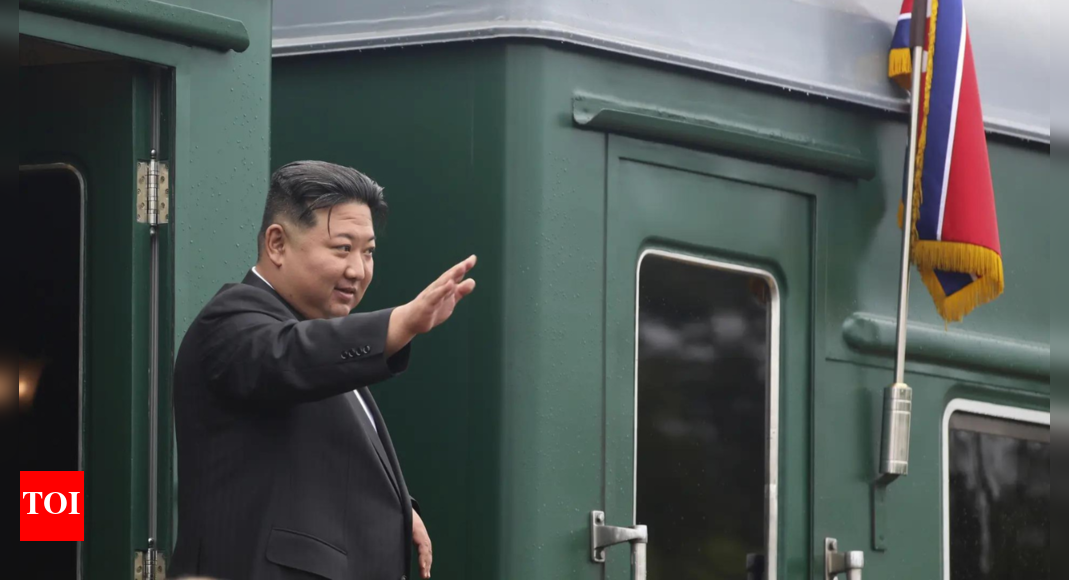
SEOUL: North Korea’s Kim Jong-un left Pyongyang by train on Monday on his way to Beijing, Yonhap news agency reported, relying on a slow but specialised form of transport that the country’s leaders have used for decades.It was not clear which train he used, but in the past he has used bulletproof trains that offer a safer and more comfortable space for a large entourage, security guards, food and amenities, and a place to discuss agendas ahead of meetings, experts say. Since becoming the head in late 2011, Kim has used a train to visit China, Vietnam, and Russia.It is unclear how many trains North Korean leaders have used over the years, but Ahn Byung-min, a South Korean expert on North Korean transportation, has said multiple trains were needed for security reasons.Ahn said those trains have 10 to 15 carriages each, some of which are used only by the leader, such as a bedroom, but others carry security guards and medical staff. They also usually have space for Kim’s office, communications equipment, a restaurant, and several car transportation carriages for two armoured Mercedes, he added.A video released in 2018 by North Korean state TV showed Kim meeting with top Chinese officials in a wide train car ringed with pink couches. The video also showed the carriage housing Kim’s office, with a desk and chair, and a map of China and the Korean peninsula.In 2020, state TV footage showed Kim riding a train to visit a typhoon-hit area, offering a glimpse of a carriage decorated with flower-shaped lighting and zebra-printed fabric chairs.When Kim Jong-un took the train to Russia, including in 2023 for a summit with President Putin, its wheel assemblies had to be reconfigured at a border station because the two countries use different rail gauges, Ahn said.While there is no such requirement for China, a Chinese locomotive pulls the train once it crosses the border, because a local engineer knows the rail system and signals, said Kim Han-tae, a South Korean former train engineer.Ahn noted the serial numbers were either 0001 or 0002, suggesting China was providing him with engines reserved for the most senior officials. The train can reach speeds of up to 80kms/hr on China’s network, compared with a maximum of about 45kms/ hr on North Korea’s tracks, Ahn said. North Korea’s founding leader, Kim Il Sung, Kim’s grandfather, travelled abroad by train regularly until his death in 1994.(Taken from Reuters)
-

 Business3 days ago
Business3 days agoThe Guardian view on Trump and the Fed: independence is no substitute for accountability | Editorial
-
Tools & Platforms3 weeks ago
Building Trust in Military AI Starts with Opening the Black Box – War on the Rocks
-

 Ethics & Policy1 month ago
Ethics & Policy1 month agoSDAIA Supports Saudi Arabia’s Leadership in Shaping Global AI Ethics, Policy, and Research – وكالة الأنباء السعودية
-

 Events & Conferences3 months ago
Events & Conferences3 months agoJourney to 1000 models: Scaling Instagram’s recommendation system
-

 Jobs & Careers2 months ago
Jobs & Careers2 months agoMumbai-based Perplexity Alternative Has 60k+ Users Without Funding
-

 Funding & Business2 months ago
Funding & Business2 months agoKayak and Expedia race to build AI travel agents that turn social posts into itineraries
-

 Education2 months ago
Education2 months agoVEX Robotics launches AI-powered classroom robotics system
-

 Podcasts & Talks2 months ago
Podcasts & Talks2 months agoHappy 4th of July! 🎆 Made with Veo 3 in Gemini
-

 Podcasts & Talks2 months ago
Podcasts & Talks2 months agoOpenAI 🤝 @teamganassi
-

 Mergers & Acquisitions2 months ago
Mergers & Acquisitions2 months agoDonald Trump suggests US government review subsidies to Elon Musk’s companies






